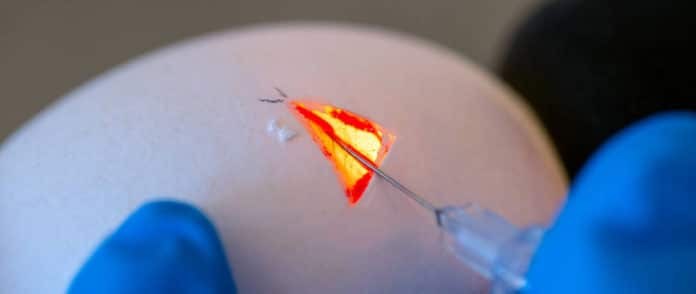Using the CRISPR/Cas9 method, genes can be inactivated or specifically modified easily. The technique consists of two components.
The gRNA (guide RNA) is a short sequence that binds explicitly to the DNA segment of the one that will be modified. The Cas9 nuclease, the actual “gene scissors”, binds to the gRNA and cuts the respective part of the target DNA. This cut activates repair mechanisms that can inactivate ene functions or incorporate specific mutations.
Now, scientists from the Technical University of Munich (TUM) have discovered a way to efficiently study molecular mechanisms of disease resistance or biomedical issues in farm animals. Genetically engineering animals offered scientists detailed insights into the molecular basis of health and disease.
Although other species, such as pigs, are more similar to human physiology, scientists mainly focused on genetically modified mice. Using CRISPR/Cas9, scientists now generated chickens and pigs in which target genes in desired organs can be efficiently altered.
Scientists were able to introduce specific gene mutations into the desired organ or even correct existing genes without creating new animal models for each target gene. This reduces the number of animals required for research.
Benjamin Schuster, Professor of Reproductive Biotechnology at the TUM, said, “The generated animals provide the gene scissors, the Cas9 protein, right along with them. So all we have to do is to introduce the guide RNAs to get animals that have specific genetic characteristics. The initial generation of these animals took about three years. Cas9 can now be used at all stages of animal development since every cell in the body permanently possesses the Cas9 protein. We have been successfully able to utilize this technique in chicken embryos as well as in living pigs.”
Scientists found that the engineered chickens and pigs possess the Cas9 nuclease in all organs. This is particularly useful in biomedical and agricultural research.
Angelika Schnieke, Professor of Livestock Biotechnology at the TUM, said, “Due to the presence of Cas9 in the cells, the processes are significantly accelerated and simplified. Cas9-equipped animals make it possible, for example, to inactivate tumor-relevant genes specifically and to simulate cancer development.”
Prof. Schuster said, “Cas9 pigs and chickens enable researchers to test which genes might be involved in the formation of traits, such as disease resistance, directly in the animal. The mechanism of the CRISPR/Cas9 system may also be useful for combating infections using DNA viruses. Initial cell culture experiments showed that this already works for the avian herpes virus.”
Prof. Schnieke notes, “Our Cas9-expressing chickens and pigs represent an innovative resource for genome editing in the biomedical and agricultural sciences, but beyond that, these animals are also available to other research groups. Hence, efficient genome editing in living animals has the potential to advance biomedical and agricultural research significantly.”
Journal Reference:
- Beate Rieblinger et al. Cas9-expressing chickens and pigs as resources for genome editing in livestock. DOI: 10.1073/pnas.2022562118
